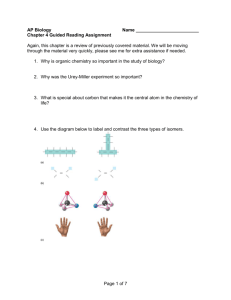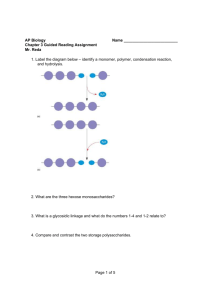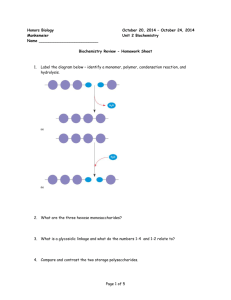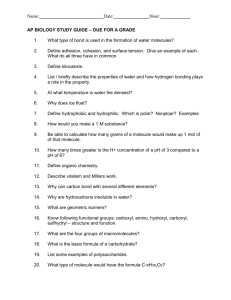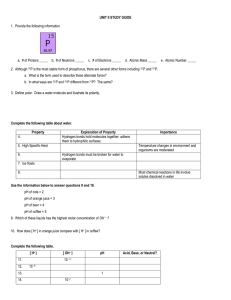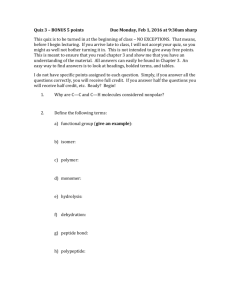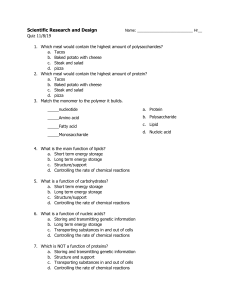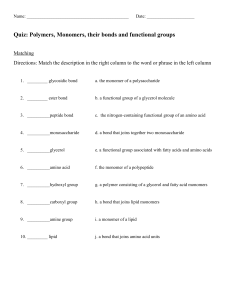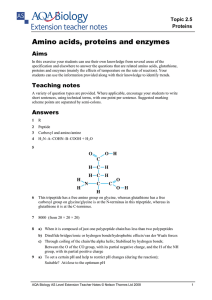Directive reading functional groups and organic macromolecules
advertisement
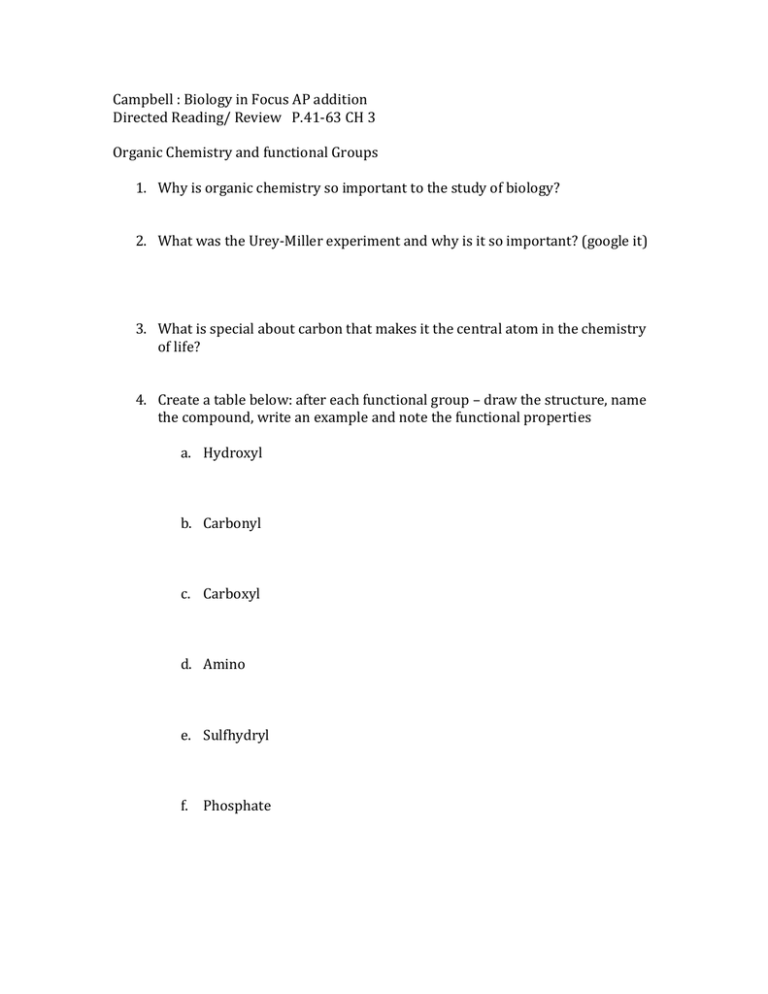
Campbell : Biology in Focus AP addition Directed Reading/ Review P.41-63 CH 3 Organic Chemistry and functional Groups 1. Why is organic chemistry so important to the study of biology? 2. What was the Urey-Miller experiment and why is it so important? (google it) 3. What is special about carbon that makes it the central atom in the chemistry of life? 4. Create a table below: after each functional group – draw the structure, name the compound, write an example and note the functional properties a. Hydroxyl b. Carbonyl c. Carboxyl d. Amino e. Sulfhydryl f. Phosphate 5. Label the diagram below –Identify monomer, polymer, condensation reaction and hydrolysis. 6. What is a pentose monosaccharide what is a hexose monosaccharide and give an example of each. 7. What is a glycosidic linkage and what do the numbers 1-4 and 1-2 relate to? 8. Compare and contrast plant and animal storage polysaccharides. 9. Compare and contrast plant and animal structural polysaccharides. 10. Why are lipids grouped together? 11. What are the building blocks of fats? 12. Contrasts saturated and unsaturated fats- how does this relate to the concept that structure and function are linked. 13. Draw a phospholipid in a simple way and label the functional elements of that molecule. 14. How would you recognize a steroid molecule? 15. List the 8 types of proteins and give their basic functions. 16. What are the names for the monomers and polymers of proteins? 17. Draw two amino acids- note the amino group, the carboxyl group and the alpha carbon, circle the water molecule to be removed and note the peptide bond formed upon condensation of these monomers. 18. Explain the 4 basic levels of protein structure a. Primary b. Secondary c. Tertiary d. Quaternary 19. How does the characteristics of an amino acid – nonpolar, polar, acidic or basic relate to the issue of tertiary structure 20. What does denature mean and why is it important? 21. What are the roles of nucleic acids? 22. Explain the relationship between nucleic acids and proteins 23. What is the central dogma of Biology? (google it) 24. Draw a monomer of DNA and label its 3 major parts. 25. What is meant by the term that DNA is antiparallele?
